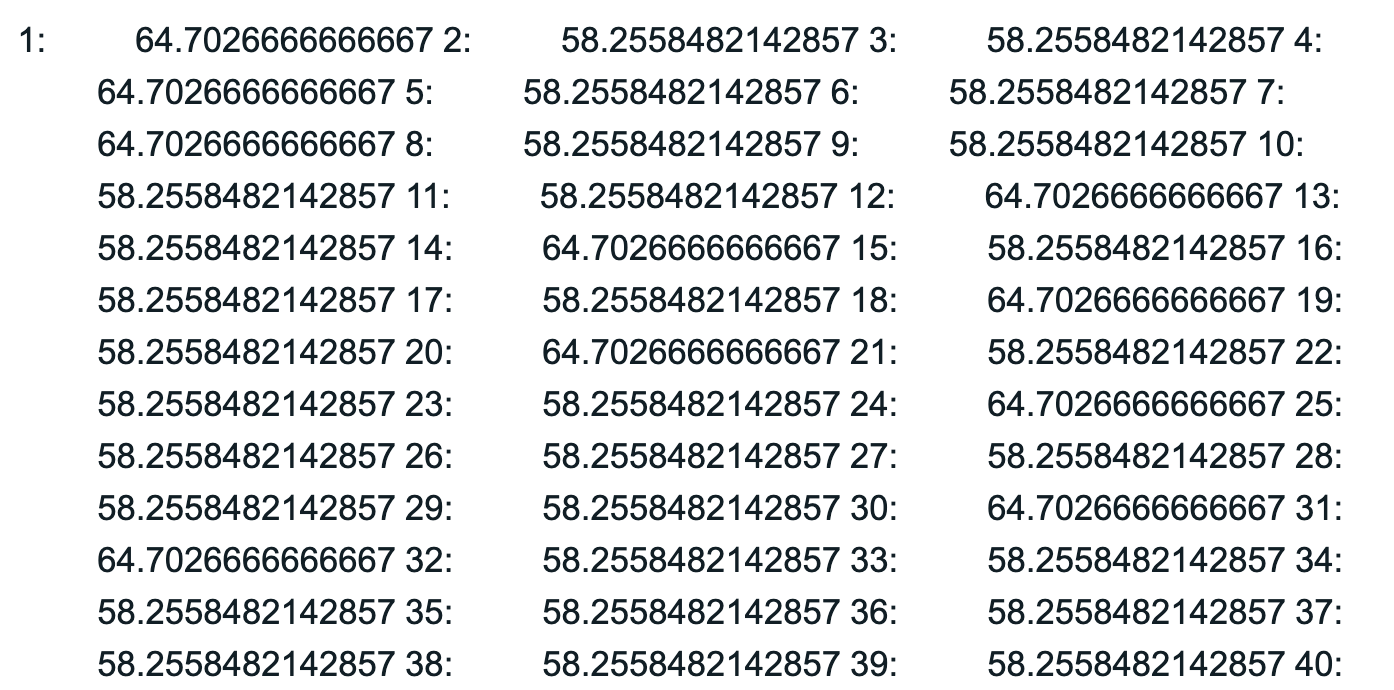predict()
The predict() function will generate the prediction(s) from a model.
 Example 1:
Example 1:
# Calculate the predictions from the Gender model of Thumb
# Use the lm() function to specify the model
predict(lm(Thumb ~ Gender, data = Fingers))
# Alt: Save the model into an object first
# then specify the name of the object as the argument
# (this method will produce the same output as the method above)
gender_model <- lm(Thumb ~ Gender, data = Fingers)
predict(gender_model)
Example output (truncated):

 Example 2:
Example 2:
To see each prediction in context, you might consider saving the predictions into the data frame as a new column to see more closely what the predict() function is doing.
# Save the predictions back into the data frame
gender_model <- lm(Thumb ~ Gender, data = Fingers)
Fingers$Thumb_predict <- predict(gender_model)
# Select a few rows and the relevant columns to compare
head(select(Fingers, Thumb, Gender, Thumb_predict))
Example output:
Related Articles
Statistical Model
A statistical model is a simplified way of describing how data are generated. It helps us separate what we can explain using known information from what we cannot explain perfectly. We use statistical models for three main purposes: (1) to understand ...resid()
The resid() function will calculate the residuals (error) from a model. That is, when given a model, it will take each case and calculate how far away the observed value is from the prediction of the model. Example 1: # Calculate the residuals from ...Data Generating Process (DGP)
Data Generating Process (DGP) The Data Generating Process (DGP) refers to the underlying mechanism—real or hypothetical—that produces the data we observe. A DGP specifies how variables are related, how randomness enters the system, and how observed ...SS Model
SS model is the reduction in error (measured in sums of squares) due to the model; the area of all the squared deviations based on the distance between the complex model predictions and the null model predictions.SS Error
SS error is the amount of error left unexplained by the model; the area of all the squared residuals based on the distance of each score from the model prediction.